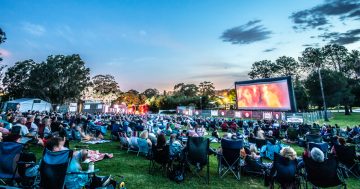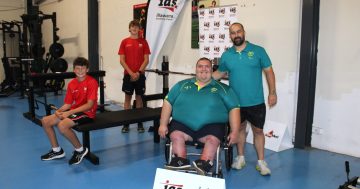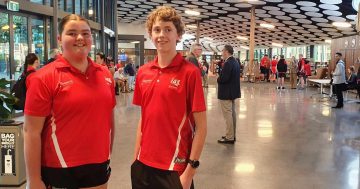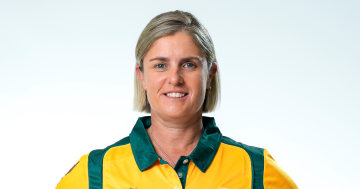
(Left to right) Penny Elliot-Fleming, Mel Boon, Sam Blade and Stephenie Rodriguez are among seven Aussie wheelchair fencers with their eyes on the prize. Photo: Alex Andre/NSW Fencing Academy.
“A new amputee with a head full of dreams” – the one-liner at the top of Mel Boon’s Instagram profile says it all.
The Illawarra woman thought she would never compete in sport again after her left leg was amputated following a biking accident and subsequent infection.
Now, less than a year after discovering wheelchair fencing – a sport woefully underrepresented in Australia – she’s part of a determined team of athletes who have set their sights on the Paralympics.
Things escalated quickly after Mel discovered wheelchair fencing through APC Prosthetics, who made her artificial limb.
“I’m a new amputee and life had become all about medical matters. I longed for something to take me outside of that space,” she says.
“At first, I was hesitant because it was in a wheelchair and truth be told, that’s something I had been rejecting, only because of the headspace I was in. So I kept putting it off.
“When I finally went, from the first lesson I was in love.
“Wheelchair fencing actually gives you so much freedom – the movement, the mind games. It’s not just about whacking things; it’s this incredible game of cat and mouse that requires great physical and mental ability.”
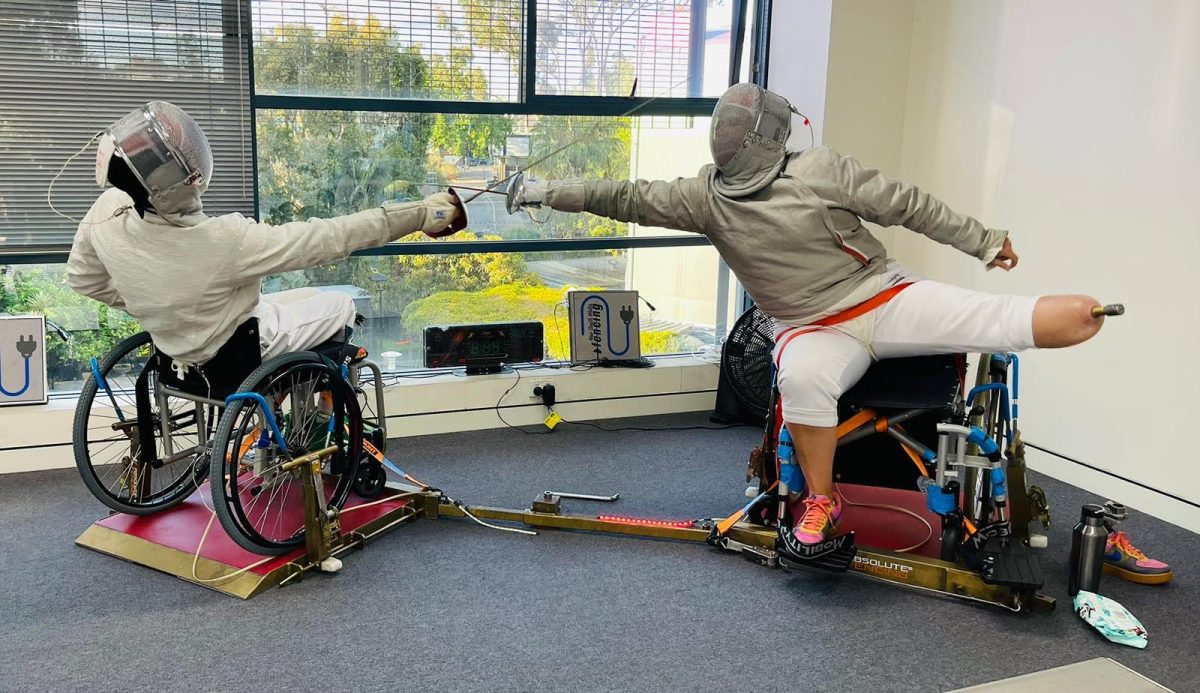
Wheelchair fencing is an intense workout requiring tremendous upper body and core strength. Photo: Alex Andre/NSW Fencing Academy.
Mel is one of seven wheelchair fencers training under Fencing Academy of NSW coach and former Commonwealth Games fencer Alex Andre, three to four times a week in the country’s only venue with fit-for-purpose equipment, the NSW Fencing Centre.
That team includes fellow Illawarra woman Penny Elliot-Fleming.
“I’ve been an amputee for about 13 years now. I still ride a horse, I do pilates but this is something I can pour my passion into … I can’t explain how much joy it gives me,” she says.
“It seems to the outside world that wheelchair fencing, you have it easier because you sit in a chair that’s attached to the floor. But as our team is very small, we compete at a local club level against able-bodied people who sit in a chair opposite us and fence. They’re amazed at how hard it is, and the sheer power it requires from the upper body.
“We don’t have legs to skip out of the way – your best weapon is your core strength because the only way to get away is to lean out and the only way to succeed in getting a point is to lean in. It’s intense, and it allows us to show people what we can do. We can do sport. We do have goals.”
The current goal is the World Championships, set to be held in Bangkok in April 2024 – but grit alone won’t get them there.
Funding is the first hurdle. The sport requires specialist equipment. Right now most of the team are using regular wheelchairs with rudimentary modifications to train in. But if they are to represent Australia, the wheelchairs alone, which must meet strict international standards, cost about $8000, and each competitor must have their own.
They must also have appropriate gear including lamé – an electrically conductive jacket that calculates the scoring.
All in all, it will cost Mel and Penny about $12,000 each out of their own pockets just to compete.
“That’s a tremendous amount of money for any one person to outlay, let alone someone with hefty medical bills,” Mel says.
Training opportunities are also scarce – it’s for this reason Penny believes that not all who would participate in wheelchair fencing do.
“We go to the only club in Sydney equipped for wheelchair fencing. We’re lucky because we drive but I’m certain there are others who would love to do this but simply can’t get there.”
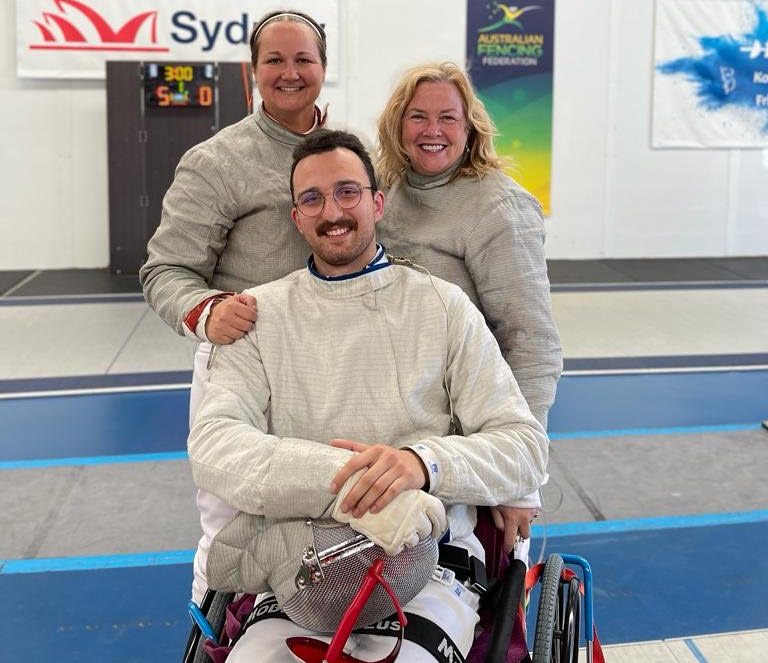
These skilled wheelchair fencers want to represent Australia in the Paralympics, and it’s not a lack of passion that’s holding them back. Photo: Alex Andre/NSW Fencing Academy.
Insurmountable as the challenges seem, it’s not stopping them from pursuing the ultimate goal.
“Australia has never had a para-fencing team represented at Paralympics or at an international event. We want to be the first,” Mel says.
“The really exciting thing is we’re potentially setting up a pathway for future teams. We as a small team are trying to show what can be done, but we want this to be something that can grow.”
Mel says the sport has incredible potential to empower – but it must be fairer. She’s calling for fencing centres in every state to be fit out with the necessary equipment.
“Children with length issues, limb deficiencies, cerebral palsy – anything that puts them in a wheelchair – shouldn’t have to watch from the sidelines,” she says.
“It excites me to think that young kids in wheelchairs today could represent in Brisbane in 2032. Imagine how empowering that would be for a child.
“I feel so much gratitude that I have found this. It has completely changed my life. Sometimes I even think – maybe this is what it’s all about, the reason these things happen.”
The team is currently fundraising to purchase the required equipment with a $70,000 goal. Anyone interested in helping this incredible team of seven into the green and gold can donate here.








